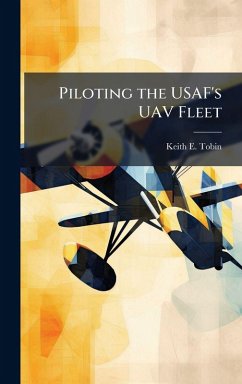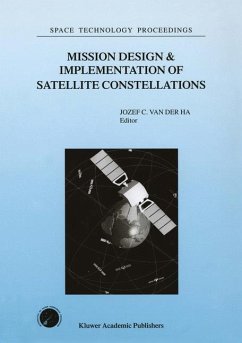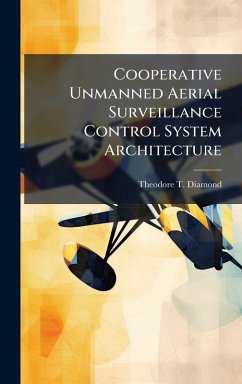
AFIT UAV Swarm Mission Planning and Simulation System
Versandkostenfrei!
Versandfertig in über 4 Wochen
30,99 €
inkl. MwSt.
Weitere Ausgaben:

PAYBACK Punkte
15 °P sammeln!
The purpose of this research is to design and implement a comprehensive mission planning system for swarms of autonomous aerial vehicles. The system integrates several problem domains including path planning, vehicle routing, and swarm behavior. The developed system consists of a parallel, multi-objective evolutionary algorithm-based path planner, a genetic algorithm-based vehicle router, and a parallel UAV swarm simulator. Both the path planner and the UAV swarm simulator are developed on AFIT's Beowulf parallel computer clusters. An extensive set of tests are performed to validate the system...
The purpose of this research is to design and implement a comprehensive mission planning system for swarms of autonomous aerial vehicles. The system integrates several problem domains including path planning, vehicle routing, and swarm behavior. The developed system consists of a parallel, multi-objective evolutionary algorithm-based path planner, a genetic algorithm-based vehicle router, and a parallel UAV swarm simulator. Both the path planner and the UAV swarm simulator are developed on AFIT's Beowulf parallel computer clusters. An extensive set of tests are performed to validate the system components as well as the system integration. Tests focus on two primary objectives: efficiency and effectiveness. The simulator is interfaced with a visualization system that serves as both an iterative design tool and as a mission playback tool. As a design tool, the visualization system provides rapid feedback, allowing developers to quickly observe the effects of model changes on its behavior. As a mission playback tool, decision makers and mission planners can view mission scenarios played out with different sets of parameters. Novel aspects of this research include: integrating terrain following technology into a swarm model as a means of detection avoidance, combining practical problems of path planning and routing into a comprehensive mission planning strategy, and the development of a swarm behavior model with path following capabilities. The culmination of this effort is the development of an extensible developmental model for swarm behavior. Discussions on the of the system's capabilities and limitations are presented along with recommendation for further development. This work has been selected by scholars as being culturally important, and is part of the knowledge base of civilization as we know it. This work was reproduced from the original artifact, and remains as true to the original work as possible. Therefore, you will see the original copyright references, library stamps (as most of these works have been housed in our most important libraries around the world), and other notations in the work. This work is in the public domain in the United States of America, and possibly other nations. Within the United States, you may freely copy and distribute this work, as no entity (individual or corporate) has a copyright on the body of the work. As a reproduction of a historical artifact, this work may contain missing or blurred pages, poor pictures, errant marks, etc. Scholars believe, and we concur, that this work is important enough to be preserved, reproduced, and made generally available to the public. We appreciate your support of the preservation process, and thank you for being an important part of keeping this knowledge alive and relevant.












